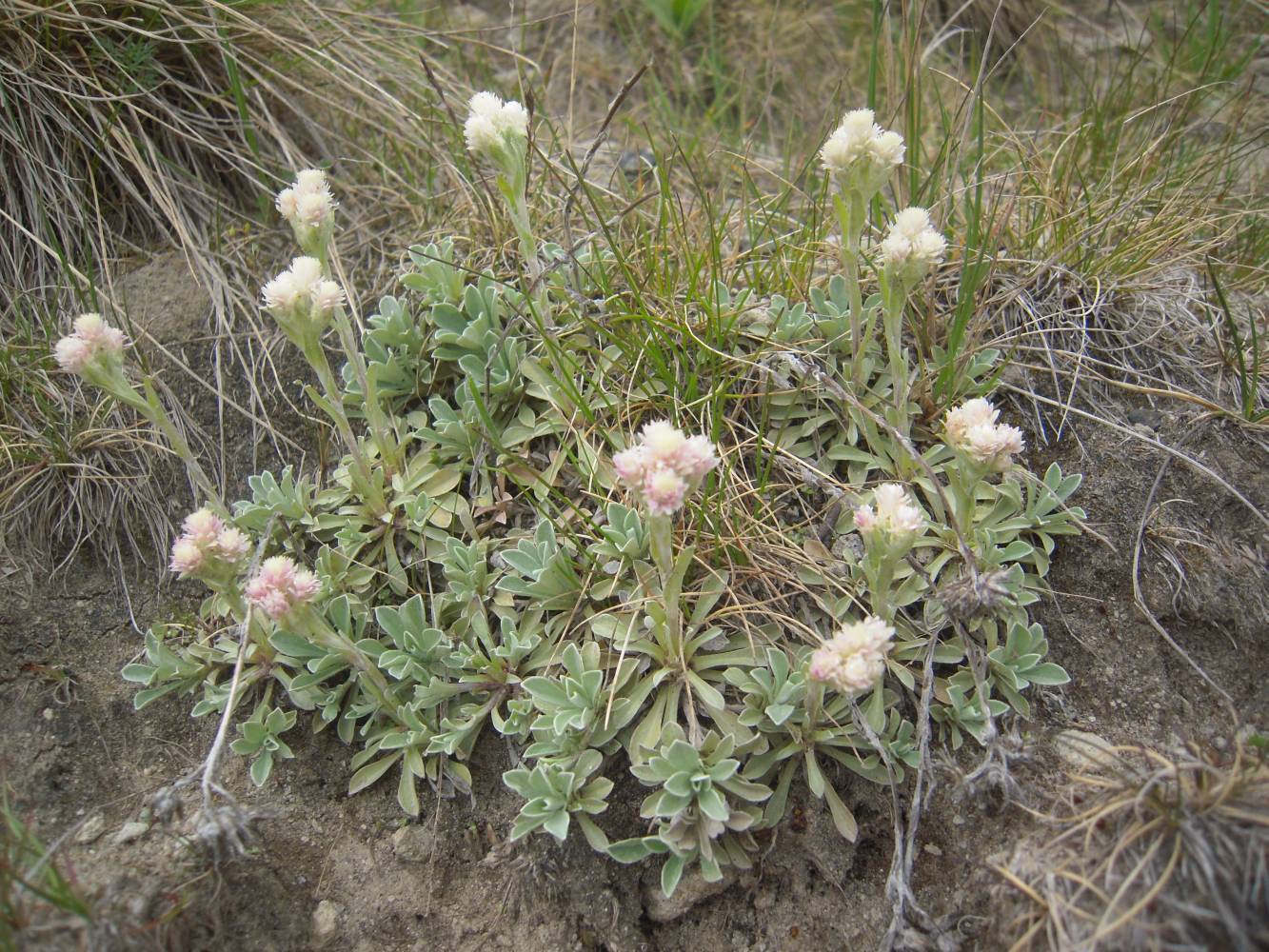Antennaria caucasica: Red Data Book of Armenia

EN B 1 ab(iii) + 2 ab(iii)
Category. Endangered species. Endemic of the Caucasus. The extent of occurrence is less than 5000 km2, the area of occupancy is less than 500 km2. It was not included in the first edition of the Red Data Book of Armenia. It is not included in the Annexes of CITES and that of the Bern Convention.
Description. Perennial, white–tenuitomentose herb 5–15 cm with creeping rhizome and prostrate, rooting shoots. Rosette leaves broadly spathulate, obtuse. Capitula 6–10 cm in diameter, by 3–6 in dense corymbiform inflorescence; rarely solitary. Involucre phyllaries mainly white, sometimes pinkish. Achenes small, terete. Pappus of numerous, thin, connate at base setae.
Distribution. In Armenia it occurs in Upper Akhuryan (mountain Ghukasyan Mets), Aparan (mountains Qjoroghli and Halab) and Gegham (Gridzor, mountain Spitakasar) floristic regions. EOO is 1650 km2, AOO is 20 km2. The number of locations is 5. Besides of Armenia the area of distribution includes Ciscaucasia, Dagestan, West and East Transcaucasia.
Ecological, biological and phytocoenological peculiarities. Grows in alpine and sub–alpine belts, at the altitudes of 2900–3200 (3500) meters above sea level, in stony places, meadows. Flowering from June to July, fruiting from July to August.
Limiting factors. Restricted extent of occurrence and area of occupancy, global climate change, grazing.
Conservation actions. One of the sub–populations is situated in the buffer zone of "Sevan" National Park, the second in the area of "Relic circus at Qjoroghli mountain" nature monument. Necessary: monitoring of the population state.
Suggestions
 The Ministry of Environment sent a letter international partners to draw their attention to the real danger of environmental disasters as a result of Azerbaijan's large-scale aggression towards the territory of Armenia
The Ministry of Environment sent a letter international partners to draw their attention to the real danger of environmental disasters as a result of Azerbaijan's large-scale aggression towards the territory of Armenia
 Vicia pisiformis: Red Data Book of Armenia
Vicia pisiformis: Red Data Book of Armenia
 Vavilovia formosa: Red Data Book of Armenia
Vavilovia formosa: Red Data Book of Armenia
 Trigonella capitata: Red Data Book of Armenia
Trigonella capitata: Red Data Book of Armenia
 Trigonella astroides: Red Data Book of Armenia
Trigonella astroides: Red Data Book of Armenia












